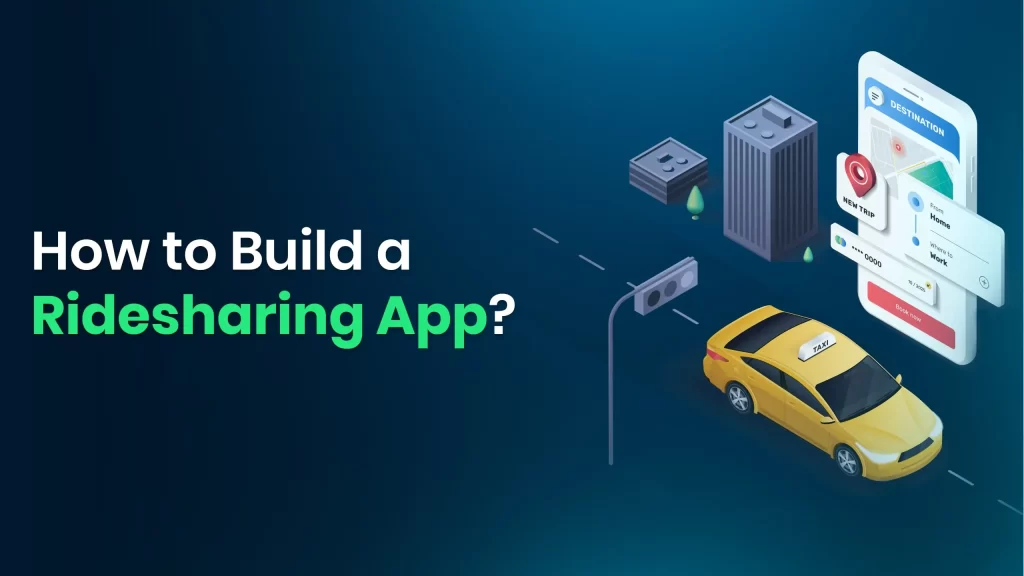
In the era of digital transformation, ridesharing apps have become an integral part of urban transportation, offering convenient and cost-effective solutions for commuters. If you’re considering entering the dynamic world of app development and are eager to create your own ridesharing platform, this comprehensive guide will walk you through the key steps and considerations to build a successful ridesharing app.
1. Conduct Market Research
Before delving into the development process, it’s crucial to conduct thorough market research. Identify your target audience, analyze the competition, and understand the unique needs and challenges of your potential users. By gaining insights into the market, you’ll be better equipped to design an app that stands out and meets the demands of your users.
2. Define Your Unique Value Proposition
What will set your ridesharing app apart from existing competitors? Whether it’s superior user experience, unique features, or innovative solutions to common problems, clearly define your unique value proposition. This will be the driving force behind your app’s success and will help you attract and retain users.
3. Choose a Business Model
Decide on the business model that suits your goals and vision for the ridesharing app. Common models include commission-based revenue, subscription plans, or a combination of both. Ensure that your chosen model aligns with your target market and encourages user engagement.
4. Select the Right Technology Stack
Choosing the right technology stack is a critical decision that impacts the performance, scalability, and security of your ridesharing app. Consider factors such as the app’s functionality, desired platforms (iOS, Android, or both), and your development team’s expertise. Common technologies used in ridesharing app development include GPS and mapping APIs, payment gateways, and real-time communication tools.
5. Design a User-Friendly Interface
A user-friendly interface is essential for the success of any app. Work with experienced UX/UI designers to create an intuitive and visually appealing design. Prioritize simplicity and ease of use, ensuring that users can seamlessly navigate through your app to request rides, make payments, and provide feedback.
6. Implement Robust Security Measures
Security is paramount when dealing with user data and financial transactions. Implement robust security measures to protect user information, including encryption techniques, secure authentication processes, and regular security audits. Compliance with data protection regulations is also crucial to build trust with your users.
7. Integrate Geolocation and Mapping Services
Geolocation and mapping services are at the core of ridesharing apps. Integrate reliable APIs to enable accurate location tracking, route optimization, and real-time navigation. This ensures that drivers can efficiently reach their destinations and passengers can track their rides in real time.
8. Develop a Reliable Matching Algorithm
The efficiency of your ridesharing app relies on a reliable matching algorithm that efficiently pairs drivers with passengers. Consider factors such as proximity, destination, and user preferences to optimize the matching process and reduce wait times for both drivers and passengers.
9. Implement a Seamless Payment System
Integrate a secure and seamless payment system to facilitate transactions between passengers and drivers. Multiple payment options, such as credit cards, digital wallets, and in-app wallets, enhance user convenience. Ensure compliance with payment industry standards and regulations.
10. Focus on Quality Assurance and Testing
Before launching your ridesharing app, conduct rigorous quality assurance and testing. Test the app’s functionality, performance, and security across various devices and platforms. Address any bugs or issues to provide a smooth and reliable experience for users.
11. Launch and Market Your App
Once you’ve thoroughly tested your ridesharing app, it’s time to launch it in the market. Develop a comprehensive marketing strategy to create awareness and attract users. Utilize social media, online advertising, and partnerships to maximize your app’s visibility.
12. Gather and Analyze User Feedback
After the launch, actively gather and analyze user feedback. Pay attention to user reviews, ratings, and comments to identify areas for improvement. Regularly update your app based on user feedback to enhance the overall user experience.
Conclusion
Building a ridesharing app requires careful planning, attention to detail, and a commitment to providing an exceptional user experience. By following these steps and staying attuned to market trends, you can create a ridesharing app that not only meets the needs of your users but also stands out in a competitive landscape. Keep evolving your app based on user feedback and technological advancements to ensure its long-term success in the ever-evolving world of mobile app development.
